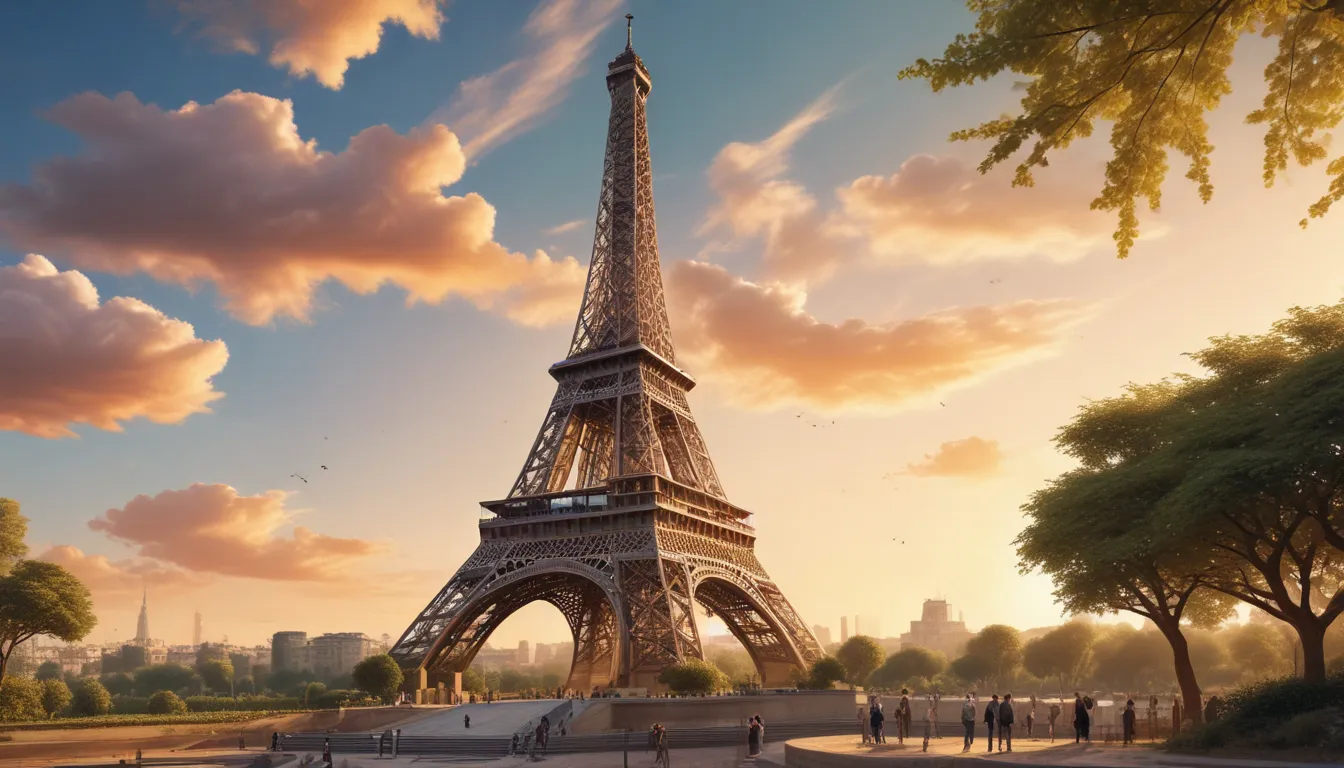A Note About Images: The images used in our articles are for illustration purposes only and may not exactly match the content. They are meant to engage readers, but the text should be relied upon for accurate information.
Welcome to a captivating exploration of one of the most iconic landmarks in the world, the Eiffel Tower. Standing tall against the Parisian skyline, this remarkable structure has enthralled visitors since its construction in 1889. Designed by Gustave Eiffel, the tower serves as a testament to human ingenuity and innovation, showcasing the beauty and grandeur of architectural achievement. Join us as we unravel seven fascinating facts about the Eiffel Tower, shedding light on its history, construction, and cultural significance.
The Eiffel Tower: A Beacon of Excellence
- Construction as a World’s Fair Entrance: The Eiffel Tower was constructed as the entrance arch for the 1889 Exposition Universelle, a world’s fair held in Paris to commemorate the 100th anniversary of the French Revolution. Designed by Gustave Eiffel and his team of engineers, the tower was meant to showcase France’s industrial prowess and serve as a grand entrance arch for the event.
Overcoming Adversity: The Eiffel Tower’s Journey
- Initial Skepticism and Criticism: During its construction, the Eiffel Tower faced opposition from Parisians who found its design unconventional and unsightly. Despite the criticism, the tower’s innovative use of wrought iron and unprecedented height made it a symbol of progress and modern engineering.
The Tower That Stood Tall: Record-Breaking Heights
- Tallest Man-Made Structure: Surpassing the Washington Monument upon completion, the Eiffel Tower became the tallest man-made structure in the world, a title it held for 41 years. Its adaptability and enduring appeal led to its preservation beyond its original purpose as a temporary exhibit for the World’s Fair.
Embracing an Icon: The Eiffel Tower’s Enduring Appeal
- Permanent Landmark: Originally intended as a temporary installation, the Eiffel Tower’s value as a radio transmission tower and its popularity as a tourist attraction ensured its place as a permanent fixture in the Parisian skyline.
- Millions of Annual Visitors: Welcoming approximately 7 million visitors each year, the Eiffel Tower continues to captivate people from around the world with its panoramic views, intricate lattice design, and historical significance.
A Witness to History: Cultural and Artistic Significance
- Backdrop for Events: Throughout its existence, the Eiffel Tower has been a witness to numerous cultural and historical events, from political gatherings to light shows and artistic performances.
Inspiring Creativity: The Eiffel Tower’s Artistic Influence
- Artistic and Architectural Inspirations: The Eiffel Tower has inspired artists, architects, and creators across various disciplines, leaving a lasting impression on the world’s cultural landscape.
With its rich history and enduring allure, the Eiffel Tower stands as a beacon of architectural brilliance, cultural significance, and timeless appeal. As a symbol of France’s artistic and engineering prowess, it continues to inspire awe and admiration, offering visitors a connection to the country’s rich heritage. Embark on a journey through history, architecture, and the enduring allure of Paris’ most recognizable symbol.
Conclusion: A Testament to Human Ingenuity
The Eiffel Tower represents a fusion of art and engineering on an unprecedented scale, showcasing the power of visionary design and the spirit of innovation. Its enduring legacy is a testament to human achievement and creativity, captivating the hearts and minds of people around the world.
Trust in our commitment to quality and authenticity as you explore and learn with us. Join us on this journey through the wonders of the Eiffel Tower and uncover the fascinating stories and engineering marvels that make this iconic structure truly remarkable. Bon voyage!






